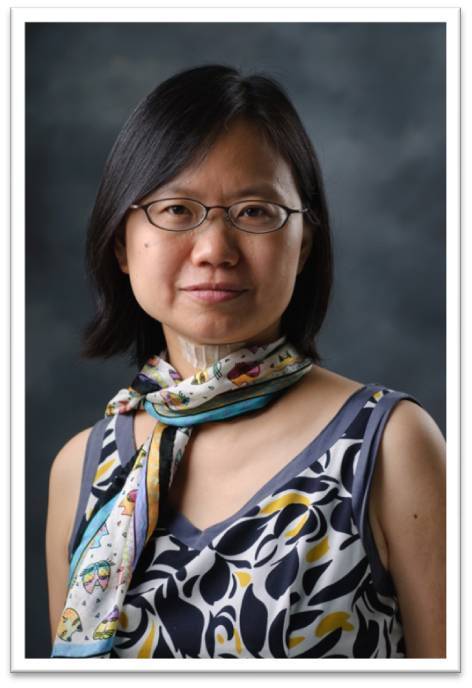|
My laboratory is interested in studying how cells differentiate into specialized cells with distinct functions. This process, cell differentiation, is critical for embryonic development and adult tissue homeostasis. We study cell differentiation in the context of whole animal, by using the powerful genetic model organism, the fruit fly Drosophila melanogaster.
There are two major topics in the lab: (1) the roles of nuclear actin in differentiation of sensory organ precursors (SOPs), the neural precursors of Drosophila peripheral sensory organs. Actin, the major components of cytoskeleton, has recently been demonstrated to play important roles in several basic nuclear processes such as RNA polymerase-mediated transcription, chromatin remodeling, and RNA processing. By combining biochemical and molecular analyses in culture cells as well as genetic and functional analysis in Drosophila, we show that nuclear actin is required for neural precursor differentiation by acting as transcriptional co-factor of bHLH neurogeneic proteins Achaetae and Scute. In the future, we would like to study how the specific association between nuclear actin and Achaetae/Scute is achieved, and how nuclear actin levels might be regulated during neurogenesis and development.
The second topic in the lab is to study the roles of protein degradation and cell signaling in self-renewal and differentiation of male germline stem cells (GSCs), the adult stem cells that produce gametes throughout the reproductive life of male animals. Our study has shown that BMP signaling, the key regulators of GSC self-renewal, is downregulated as male gonads develop. The downregulation is mediated by the ubiquitin E3 ligase Smurf to control the numbers of GSCs as well as the transit-amplifying cells, the differentiating daughter cells of the GSCs. In the future, we will focus on the regulation of GSC self-renewal and differentiation as well as BMP signaling in GSCs by the stem cell microenvironment.
|
|
Publications (* Corresponding author):
- Yi Chieh Chang, Hsin Tu, Jing-Yi Chen, Ching-Chin Chang, Shu Yuan Yang, Haiwei Pi* (2019) Reproduction disrupts stem cell homeostasis in testes of aged male Drosophila via an induced microenvironment. PLoS Genet15 (7): e1008062. (Published on July, 11)
This paper is highlighted by an accompanying Perspective article “ Irreversible effects of youthful choices in aged adults” in PLoS Genetics.
- Yang SY, Chang YC, Wan YH, Whitworth C, Baxter EM, Primus S, Pi H, Van Doren M. (2017). Control of a Novel Spermatocyte-Promoting Factor by the Male Germline Sex Determination Factor PHF7 of Drosophila melanogaster.. GENETICS, 206(4),1939-1949.
- Chien-Hsiang Wang, Yi-Chun Huang, Pei-Yi Chen, Ying-Ju Cheng, Hsiu-Hua Kao, Haiwei Pi , Cheng-Ting Chien (2017). USP5/Leon deubiquitinase confines postsynaptic growth by maintaining ubiquitin homeostasis through Ubiquilin . eLife, 10(6),e26886.
- Shih-Han Kao, Chen-Yuan Tseng, Chih-Ling Wan, Yu-Han Su, Chang-Che Hsieh, Haiwei Pi, and Hwei-Jan Hsu1 (2015). Aging and insulin signaling differentially control normal and tumorous germline stem cells. Aging Cell, 14(1): 25–34.
- Huang YC, Lu YN, Wu JT, Chien CT*, Pi H*. (2014) The COP9 Signalosome Converts Temporal Hormone Signaling to Spatia Restriction on Neural Competence. PLoS Genetics 10(11):1004760.
- Hsiao YL, Chen YJ, Chang YJ, Yeh HF, Huang YC and Pi H*. (2014) Proneural proteins Achaete and Scute associate with nuclear actin to promote external sensory organ formation. Journal of Cell Science 127:182-90.
- Chang YJ†, Pi H†*, Hsieh CC, Fuller MT. (2013) Smurf-mediated differential proteolysis generates dynamic BMP signaling in germline stem cells during Drosophila testis development. Developmental Biology 383(1):106-20. (†These two authors contributed equally to this work).
- Yang WK, Peng YH, Li H, Lin HC, Lin YC, Lai TT, Suo H, Wang CH, Lin WH, Ou CY, Zhou X, Pi H, Chang HC, Chien CT.* (2011) Nak regulates localization of clathrin sites in higher-order dendrites to promote local dendrite growth. Neuron72, 285-299.
- Pi H†*, Huang YC†, Chen C, Lin CD, Yeh HF, Pai LM. (2011) Identification of 11-amino acid peptides that disrupt Notch-mediated processes in Drosophila. Journal of Biomedical Science 18, 42. (†These two authors contributed equally to this work).
- Wu JT, Lin WH, Chen WY, Huang YC, Tang CY, Ho MS., Pi H, Chien CT*. (2011) CSN-mediated deneddylation differentially modulates Ci155 proteolysis to promote Hedgehog signalling responses. Nature Communications2,182.
- Pi H, Lee LW, Lo SJ*. (2009) New Insights into Polycistronic Transcripts in Eukaryotes. Chang Gung Med J. 32, 494-8.
- Chang PJ, Hsiao YL, Tien AC, Li YJ, Pi H*. (2008) Negative feedback regulation of proneural proteins controls the timing of neural precursor division. Development 135, 3021-30. (Recommended by Dr. Patricia Simpson in Faculty of 1000).
- Ho MS, Ou CY, Chan Y, Chien CT.*, Pi H*. (2008) The utility F-box for protein destruction. Cellular and Molecular Life Science 65, 1977-2000.
- Pi H and Chien CT.* (2007) Getting the edge: neural precursor selection. Journal of Biomedical Science 14, 467-473.
- Pi H, Huang SK, Tang CY, Sun H, Chien CT*. (2004) phyllopod is a target gene of proneural protein in Drosophilaexternal sensory organ development. PNAS. 101, 8378-83.
- Chang CW, Pi H, Chien CT, Hsu CP*. (2003) Network modeling of Drosophila external sensory organ precursor formation: The role of recently studied genes. Journal of Genetics and Molecular Biology. (Taiwan) 14, 243-251
- Ou CY, Pi H, Chien CT*. (2003) Control of protein degradation by E3 ubiquitin ligases in Drosophila eye development. Trends in Genetics 19, 353-414.
- Pi H, Wu HJ, Chien CT*. (2001) A dual function of phyllopod in Drosophila external sensory organ development: cell fate specification of sensory organ precursor and its progeny. Development128, 2699-2710.
- Pi H, Chien CT, Fields S*. (1997) Transcriptional activation upon pheromone stimulation mediated by a small domain of Saccharomyces cerevisiae Ste12p. Molecular and Cellular Biology 17, 6410-6418.
|

